The Jewish Press






MARK KIRCHHOFF
JFO Community Engagement and Education

MS
WULFGAR
What encapsulates the essence of a building? Its architecture? The practical function it served or the one it currently serves? Those who inhabit it? Beth El and B’nai Israel synagogues recently collaborated on a “Jewish History Tour,” exploring the evolution of the Jewish community in the Omaha-Council Bluffs Metro Area. The fully-booked tour in August was a joyful, casual, and illuminating celebration of this past, but B’nai Israel has been wrestling with a more profound question on an existential level for the past 50 years: How does our history inform who we are today?


Mark your calendars. The much-anticipated Omaha Jewish Film Festival is back this fall, running Nov. 9 through 12 in the Alan J. Levine Performing Arts Theater at the Staenberg Omaha Jewish Community Center. Community members have recommended a lineup of entertaining, enlightening and educational films with a one-time showing for each film at 6 p.m.
Community hosts will welcome attendees, introduce each film and guide a post-screening discussion. A quick and convenient way to share feedback on the film will be provided as well. In keeping with tradition, free popcorn and bottled water are included with every ticket purchase.
Whether you come to laugh, learn, or reflect, the four films will make your attendance worthwhile. This year’s lineup is:
Sunday, Nov. 9, Bad Shabbos, a farce hosted by Rachel and Daniel Grossman. What happens when a picture-perfect Shabbat dinner goes completely off the rails? Bad Shabbos is a wild comedy where family secrets spill faster than the wine, and every polite smile hides a new disaster. You’ll laugh, you’ll gasp, and you’ll wonder how anyone will make it to dessert.
Monday, Nov. 10 Swedishkyte: Yidlife Crisis in Stockholm, a documentary with a comedic twist hosted by David Finkelstein. Armed with quick wit, deep curiosity, and plenty of chutzpah, Eli Batalion and Jamie Elman travel to Stockholm to uncover the hidden stories of Jewish life in Sweden. From 250 years of history to the surprising recognition of Yiddish as an official minority language, they discover a community full of resilience, creativity, and unexpected laughter.
"We made a Life & Legacy gift because we care deeply about the Omaha Jewish community. We want future generations to have the same incredible opportunities and programs that we have today. If our community comes together to ensure this, we will thrive for many years to come. Our children will give generously to their children. And the cycle will no doubt go on."
—
CARYN & MARC SCHEER
A strong Jewish community doesn’t happen by chance—it is built by those who care enough to secure its future. Caryn and Marc Scheer’s commitment to Life & Legacy is a testament to the belief that when we give today, we pave the way for generations to come.
By making a Life & Legacy commitment, you can help ensure that local Jewish programs, services, and institutions remain strong—without impacting your current finances. The first step is simple: complete a Letter of Intent, which can be updated anytime as your circumstances change.
Join Caryn and Marc in securing a vibrant Jewish future. Your See Life & Legacy page 2


The tour began at Beth El in West Omaha, wound its way downtown, crossed the bridge to Council Bluffs, and concluded just off Broadway with a tour of B’nai Israel’s Living History Musuem. Here, attendees were given a first-hand look at the saga of Jewish evolution in our area. Interestingly enough, while the tour led from west to east, the story it tells tracks, geographically, in reverse.
B’nai Israel has been a fixed point, not only in Council Bluffs, but in the Jewish community for more than 120 years. Opening its doors as Chevra B’nai Yisroel in 1904, the little shul on Mynster distinguishes itself to this day as the oldest Jewish institution in Eastern Nebraska and Western Iowa still standing (and active) in the same spot it was built.
In Omaha and Council Bluffs eight synagogues were established prior to WWII. On the Council Bluffs side B’nai Israel (1904) stood alone. On the Omaha side stood: Congregation of Temple Israel (1883); B’nai Jacob Anshe Sholom, a.k.a. “The Kapulier Shul” (1909); Congregation of Israel (1909); B'nai Israel Adas Russia, a.k.a. “The Kippler Shul” (1910); Beth Hamidrash Hagadol, a.k.a. “The Litvsche Shul” (1911); Beit Hamedrosh Adas Yeshuron (1922); and Beth El (1929). All these synagogues despite being orthodox, conservative, or reform, were tightly established within 5 miles of each other.
The intimate radius of these original spaces (and structures) can be attributed to many things. Limitations See B’nai Israel page 2

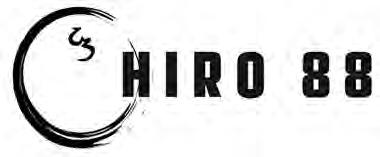
SUSHI | JAPANESE | CHINESE
OMAHA
WEST MAPLE | 3655 N. 129th St. | 402.933.0091
OLD MARKET | 1308 Jackson St. | 402.933.5168
MILLARD | 17664 Welch Pl. | 402.702.8800
LINCOLN
HAYMARKET LINCOLN | 601 R St. #100 | 402.261.9388
SOUTH LINCOLN | 5730 Hicote Dr. | 402.318.5188
www.Hiro88.com


Continued from page 1 imposed on travel during early 20th Century life. The safety and security closeness provides a newly established immigrant community, or even a lack of opportunity afforded that community due to discriminatory systems in society. The fact that a great deal of Jewish life continues to flourish in 2025 around the Jewish Community Center (JCC) and the active Omaha shuls (Beth El, Beth Israel, Chabad, and Temple Israel)—now in an even tighter radius of 2.5 miles. This might suggest that whatever the reason, geography has become the strength of a powerful and effective community. The Jewish population may be a bit more spread out residentially, but tight focal points still remain for the community as a whole.
This demographic reality makes B’nai Israel’s story—now over 15 miles and several bridges away from this modern-day, bustling Jewish hub—so compelling.
B’nai Israel is no stranger to adversity. After a few attempts to coalesce in the late 1800’s the orthodox Chevra B'nai Yisroel Congregation was organized in 1903, with a membership of 14 men. One year later, the cornerstone of their first synagogue was laid at 618 Mynster Street and the original wood frame structure quickly became the focal point of Jewish life in Council Bluffs for nearly three decades until misfortune struck on the Sabbath night of March 5, 1930, reducing the building to ashes. The Torah, sacred scrolls, and other religious items were saved, as was the building’s original cornerstone.
the ambitious task of preserving their undeniable legacy by transforming themselves into a shul with the beating heart of a museum.
They continue to serve as a functioning synagogue, hosting High Holiday Services and monthly 2nd Friday Shabbat Services. Their services are non-traditional (mixed with a healthy dose of tradition) that seek to charm congregants and grow membership. As a museum, over 1000 visitors have toured its halls in the last 5 years, learning how Jewish immigrants

shaped the community they live in today.
Despite the challenges of the Great Depression B'nai Israel’s congregation pulled together and a new structure was built on the same site and completed on Jan. 11, 1931. The rebuilt synagogue is the very building that stands today. During the 1960s, congregation growth slowed marking another transition. This time in the size of the congregation, a drastic downsizing. The Jewish community migrated to West Omaha over the latter half of the last century, and the little shul on Mynster struggled and almost closed its doors for good several times.
Always delicately threading the needle of reinvention while striving to retain its identity, B’nai Israel always found a way to persevere. Even when they could no longer afford a rabbi, a handful of congregants—all volunteers—found innovative ways for keeping the lights on, while continuing to serve its smaller but fiercely dedicated community.
The shul now finds itself in the midst of another renaissance. They secured historical landmark status and pursued
‘Write With Us,’ our small and intimate writing workshop (no need to be nervous) continues in the Fall. Upcoming workshops are scheduled for Oct. 30, Nov. 13 and Dec. 11 from 5-7 p.m. in the Noshery at the Staenberg Omaha JCC. Register by contacting Jessi at jtaylor@jewishomaha.org or Annette at avandekamp@jewishomaha.org. There is no cost to attend, although donations are always welcome.
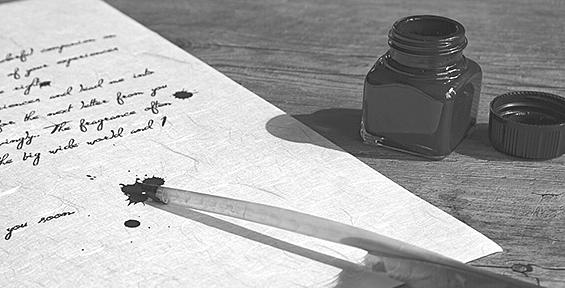
If you have wanted to write your family’s story, that great American novel, or you have always wanted to try your hand at poetry, join us! Maybe you are already an accomplished writer, but you would benefit from being in a room with other writers. Perhaps you have convinced yourself you can’t write at all, but would love to try. Everyone, from absolute beginner to professional, is welcome to attend. We will provide the kosher snacks and the writing prompts.
Continued from page 1
after-lifetime gift will help sustain Jewish education, culture, social services, and community programs for years to come.
To learn more or to complete your Letter of Intent, contact Amy Bernstein Shivvers at ashivvers@jewishomaha.org
The exhibits and their scope continually expand. There is the delightfully detailed Hebrew School to featuring a wallsized mural that is a literal view of the past from that very spot; the interactive charm of the traditional Rabbi’s Office; the informative and personal “room of doors” a.k.a. Shaping a Community room featuring local families and their businesses; the triumphant celebration of the Women of Valor room; or the newest and most ambitious attraction—the vibrant and illuminating 30-foot Synagogues on the Plains timeline featuring a journey of over 40 local synagogues and structures. Community support has enabled new growth and the first expansion in infrastructure in decades. This summer they welcomed their first Part-Time Executive Director in the form of local artist and designer, Murphy Scott Wulfgar and are announcing public museum hours beginning October 3rd. Now anyone can tour the exhibits without prior appointment on Fridays from 4–7 p.m., and Sundays from 1–4 p.m. If you would like a guided tour with a knowledgeable docent, you can still schedule an appointment at www.cblhs.org
Continued from page 1
Tuesday, Nov. 11 Matchmaking 2, a comedy hosted by Patty and Steve Nogg. Baruch, a Yeshiva student who missed every opportunity to marry, is left to live in a small room in the Yeshiva where he studies and serves as the faithful assistant to the matchmaker, Malki. Oy, who would have thought that matchmaking required all these humorous twists, turns and complications?
Wednesday, Nov. 12, The Property, a drama hosted by Mary-Beth and Bruce Muskin. Regina and her granddaughter Mika embark on a journey to Poland to reclaim their family property seized during World War II. But their quest quickly unravels when Regina unexpectedly decides to abandon the mission entirely leaving Mika lost, confused, and facing the challenges of her own evolving life situations.
Advanced ticket sales are $15 for 4 entries or $25 for eight entries used in any combination you choose." Use the QR code with this article or go to jewishomaha.org, then select the “Our Priorities” dropdown menu.
Thank you to the financial supporters of the 2025 Omaha Jewish Film Festival: Avy L. & Roberta L. Miller Film Fund, Fran and Rich Juro Endowment Fund for the Federation, Lois Jeanne Schrager Memorial Fund, Etta and Harold Epstein Security Fund, Ruth Frisch & Oscar S. Belzer Endowment Fund, Special Donor-Advised Fund of the JFO Foundation, and the Klutznick Custodial Fund. Further supported by the B’nai B’rith Henry Monsky Lodge.
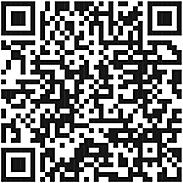

JFO Foundation Executive Director
Imagine creating a gift that lasts forever, one that ensures the strength and vitality of Omaha-Lincoln metropolitan Jewish community for generations to come.
With an endowment at the Jewish Federation of Omaha Foundation, you can do just that—leave a lasting legacy that reflects your values and commitment to our community. Plus, your seed money will grow immediately, with our 25% match. Here are types of endowments:
Create a permanent fund dedicated to supporting the Jewish Federation of Omaha’s Annual Campaign each year. These funds don’t replace your current annual gift; instead, they ensure that your generosity continues in perpetuity, making an impact year after year on your behalf.
UNRESTRICTED FUND
Provide annual income that is disbursed directly to the Federation, a Jewish agency, synagogue or a Jewish organization for its general, unrestricted use. Your gift supports the evolving needs of the Jewish community, allowing the endowed organization to allocate resources where they are needed most.
RESTRICTED
You choose where the income is directed. This may be toward a particular Jewish agency, program, or organization that is close to your heart. Whether you wish to support childhood education, social services, cultural programs, or other vital
areas, a restricted fund allows you to make a meaningful, longterm impact in the area of your choosing.
Boost Your Gift with a 25% Match! There’s never been a better time to make a lasting impact and take advantage of our boost! From now until December 31, 2025, or the $150,000 incentive pool is depleted, the Jewish Federation of Omaha Foundation will match 25% of any new or additional permanent endowment gift, up to a maximum of $20,000 per gift! This special matching opportunity applies to:
• New Endowments: Minimum gift of $10,000
• Existing Endowments: Minimum addition of $1,000
A gift of $1,000 or more to an existing permanent endowment will also qualify for the 25% match. You can establish your endowment with cash, stock, a gift of real estate or an IRA distribution.
By participating in this program, you are not only strengthening your personal legacy, but you are also ensuring that the Omaha – Lincoln metro Jewish community has the resources it needs to meet future challenges and opportunities. Whether your passion is education, social justice, religious life, or cultural preservation, an endowment is a powerful way to make a difference—today and tomorrow.
To learn more about how you can create a Forever Gift for our Jewish community, visit www.jfofoundation.org, email: ashivvers@jewishomaha.org or call 402.334.6466.
MORGAN GRONINGER
JCRC Program and Communications Manager
We want all children to grow into compassionate, informed, and responsible individuals. One of the most powerful ways to support that growth is by helping them understand the past, especially the difficult parts of history that teach us about human rights, justice, and the dangers of hatred. That’s why Holocaust education is so critical, and why we are encouraging parents and guardians to get involved.
The Institute for Holocaust Education (IHE) provides vital programs and resources that help students learn about the Holocaust in meaningful, age-appropriate ways. From survivor testimonies to interactive exhibits and guided tours, IHE offers impactful experiences that go far beyond the classroom. Unfortunately, not all schools or teachers may be aware of these opportunities. This is where parents can make a real difference. We invite parents, guardians, and caregivers to be a part of this educational mission by:
• Sharing information about the Institute for Holocaust Education with your child’s teachers, administrators, and
school leadership.
• Advocating for field trips and programming led by IHE as part of your child’s curriculum.
• Connecting your PTA or school council with IHE staff to explore collaborative programming.
• Even a simple conversation or email to a teacher can open the door to a life-changing learning experience for hundreds of students.
At a time when antisemitism and other forms of hate are on the rise, Holocaust education helps equip young people with the tools to recognize and stand up against injustice. The earlier we expose students to these lessons, the more likely they are to carry those values into adulthood.
The Institute for Holocaust Education is here as a partner to support schools, empower educators, and engage families in ensuring the lessons of the Holocaust are never forgotten. If you would like information and materials to take to your students’ teacher or school, please contact Morgan Groninger, IHE Communications Manager, at mgroninger@jewishomaha.org
GRACE GILSON
JTA
For the first time, more American voters say they sympathize with Palestinians than with Israelis, according to a new poll from The New York Times and Siena University
The poll adds yet another data point to a growing pile showing a sharp drop in sympathy for Israelis since Hamas’ Oct. 7, 2023, attack. In the immediate aftermath, the same poll found 47% of Americans siding with Israel. In the new poll released Monday, 35% of registered American voters said they sympathized more with Palestinians compared to 34% with Israel. While younger voters are least sympathetic to the Israelis, the biggest change over the last two years, the survey found, was among older Democrats who are white and college-educated. In addition to the slim preference for the Palestinians, the poll demonstrated a significant waning in support for Israel among Americans during the nearly two-year war in Gaza. Additionally, 58% of respondents said Israel should halt its military campaign in Gaza to prevent civilian casualties, even
if the 20 living Israeli hostages have not yet been freed. A similar share said the offensive should end even if Hamas has not been completely defeated.
The poll also found that 40% of voters believe that Israel is intentionally killing Palestinian civilians, and 62% believe Israel is not taking enough precautions to avoid civilian casualties.
The survey of 1,313 registered voters nationwide was taken Sept. 22 to 27, following reports of starvation in Gaza and as Israeli military’s widened its offensive in the besieged enclave — and before Israel accepted President Donald Trump’s proposal to end the Gaza war. It found that a slight majority, 51%, of registered voters disapprove of the United States providing additional economic and military support to Israel.
The findings also underscore a growing partisan divide over the conflict, with 54% of Democrats saying they sympathize more with Palestinians, and 64% of Republicans with Israelis. But while a majority of Republicans support the Israelis, that sentiment has also dropped by 14% over the course of the war, according to a June Quinnipiac poll.




SARA KOHEN
Friedel Jewish Academy Director of Advancement
At Friedel Jewish Academy, students aren't just learning a language; they are building their potential. Friedel students learn Hebrew in an immersion setting for 90 minutes each day. Studies show that immersion language learning boosts cognitive development, improves academic performance in other areas, and builds empathy and awareness of other cultures.
At Friedel, students speak, sing, read, and play in Hebrew, experiencing it as a living language. For example, second graders in Rabba Abi Taylor-Abt’s class take turns asking and answering each other about what they do and do not have for snack that day and what they like to eat. This allows for authentic, conversational use of Hebrew.
This kind of language learning strengthens students’ ability to think critically and creatively by switching between languages and approaching problems from new angles. This is especially true in Hebrew because students will read Hebrew in block print, translate it to English in their heads, and then write about it using Hebrew script, which is an entirely different writing format.
Finally, studies show that learning another language helps to build cross-cultural understanding and empathy. In their Jewish Studies classes, students learn not just about the Hebrew language but also about Jewish texts, holidays, and values and Israeli culture. Rabbi Eitan Ziv explains an example of this from the all-school Monthly Middot, “When we learn about different middot (Hebrew for “character traits”) each month, we are talking about how to build ourselves to be bet-

Learning a second language improves phonological awareness, which helps students become stronger readers in both Hebrew and English. Language immersion also improves memory, attention to detail, and pattern recognition, all of which contribute to stronger STEM (science, technology, engineering, and math) skills.
Early exposure to Hebrew also makes it easier for students to learn additional languages later. Students become more familiar with language patterns and more confident when approaching new linguistic challenges, giving them an advantage in future academic settings.
ter people. We always learn the name of the character trait, the root of the Hebrew word, and the foundation in Jewish texts. By doing so, we connect to our Hebrew and to Jewish people around the world with this universal Jewish language.” Students come from diverse backgrounds—all of which are respected. Indeed, Rabba Abi says, by learning about debates between Hillel and Shammai, Jewish sages who lived during the first century BCE, students learn that it is okay to have different viewpoints and to disagree, as long as one does so respectfully. Through Hebrew learning, Friedel students not only learn a language but also a strong foundation for lifelong learning.
RONI GOSCH
Tri-Faith Marketing and Communications Coordinator
Tri-Faith Initiative will host renowned scholar Rabbi Dr. Reuven Firestone for Bridges of Understanding: An Interfaith Dialogue Experience on Oct. 16–17, 2025 on Tri-Faith Commons.
The two-day series will feature collaborative conversations, workshops, and lectures designed to deepen understanding across Judaism, Islam, and Christianity. Dr. Firestone, Regenstein Professor of Medieval Judaism and Islam at Hebrew Union College in Los Angeles, is internationally recognized for his scholarship and leadership in interfaith endeavors. He has authored numerous books, including Introduction to Islam for Jews and The Power of Dialogue. Highlights include:
• Lunch & Learn: Abraham Across Traditions (Oct. 16 Temple Israel) — A text study exploring how Abraham is portrayed in Jewish, Christian, and Muslim scripture and tradition. Registration is $20 per person and includes lunch.
• The Rabbi Sidney and Jane Brooks Lecture Series: Problematizing Prophethood or How to Tell a “Real Prophet” from a “False Prophet”? (Oct. 16, UNO) — A provocative look at how each Abrahamic faith wrestles with new prophetic voices after scripture is canonized.
“I am so happy to be back in Omaha and to be part of the TriFaith Initiative after my early involvement in its formation,” says Rabbi Dr. Firestone. “In my many travels, I often hear people refer to what has been accomplished here and wish they could be part of something similar someday.”
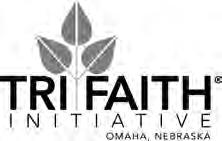
“All of our programs are rooted in dialogue and relationship,” says Brian Fahey, chair of Tri-Faith’s Board of Directors. “This Interfaith Dialogue Experience reflects what Tri-Faith is all about—bringing scholars, clergy, and community members together to learn, question, and build bridges of understanding.”
All public sessions are free and open to the community, except for the Lunch & Learn session. Donations are welcome, and registration is required. To view the full schedule and RSVP, visit trifaith.org
The Tri-Faith Initiative is dedicated to cultivating inclusive spaces that foster interfaith relationships and understanding. By promoting dialogue, education, and collaboration among diverse faith communities, Tri-Faith aims to create a world where differences are celebrated, commonalities are embraced, and everyone feels a true sense of belonging.
PARSHAT SUKKOT
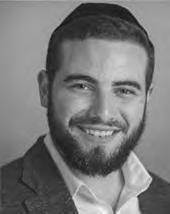
As I sat in my office, racking my brain for ideas to write, someone walked in and told me the most amazing story. A young man, let's call him Jack, was disillusioned with Judaism. Every year, he would attend the High Holy Days services with his family. The only time he would attend synagogue. And he would tell his mother, I am only here to make you happy. Jack felt that organized religion was a terrible thing and most certainly did not believe in its teachings. Jack went to college and landed an amazing job. Then Oct. 7th. And Jack flew to Israel to join the
IDF! Jack, who did not believe in organized religion, Jack the disenchanted Jew! He had been on a Birthright trip to Israel and had fallen in love with our nation and its land.
Our sages teach that the four species we wave on Sukkot represent the four times of the Jews. The etrog, with its beautiful smell and good taste, is the Jew with knowledge and good deeds. Myrtle, with its fragrance but no taste, is the Jew with good deeds but no wisdom. The Date palm, with its yummy fruit and no smell, has wisdom but no deeds. And the willow seemingly has neither. We wave them all together to remind ourselves that every single Jew is a necessary part of our nation. Jack may have seemed to be the willow, and yet he made a contribution I can only dream of.
Chag Sameach!



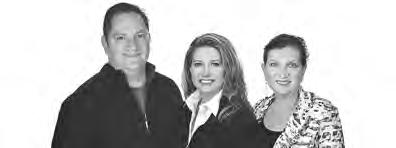


CONNOR P. MULLIN
The Lincoln Jewish Community prepared for High Holy Days with a pre-Rosh Hashanah apple picking event at the home of Bob and Stacie Bleicher on Sept. 14th. Nearly 30 community members came to Eagle to pick apples, as well as peaches, in the orchard generously opened to them by the Bleichers. Although a little warm out, everyone enjoyed some cookies, cider, and honey sticks to set the stage for a sweet new year.
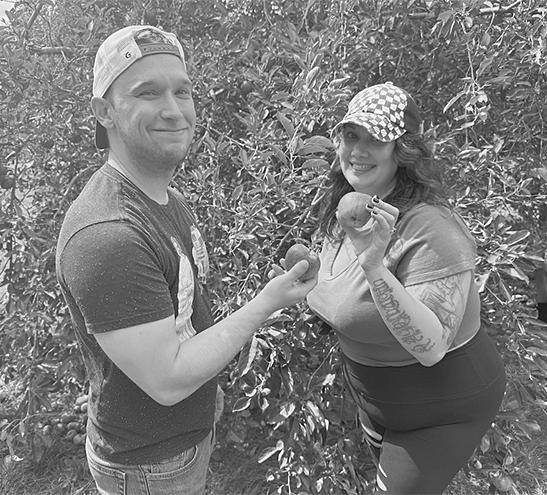
In keeping with tikkun olam, attendees picked apples not only for themselves but also for donation to the Belmont Rec Center’s lunch program. The Bleichers warned, tongue-incheek, that their trees had so many apples that Belmont might regret accepting donations, but Aimee Hyten facilitated community members donating eight bags of apples for those in need.
If you do business with any of our advertisers, please tell them you saw their ad in the Jewish Press. It really helps us!
MUSHKA TENENBAUM
Chabad of Nebraska
Sukkot is known in Jewish tradition as Zman Simchateinu— the “Season of Our Joy.” It is a holiday that invites us to step outside, dwell in a sukkah under the open sky, and experience happiness in its purest and most elevated form. This year, Chabad has prepared a rich lineup of celebrations to bring the joy of Sukkot alive for every age and stage.
On Sunday, Oct. 12, this month’s Sunday Pod, held right inside the sukkah from 9:30–11 a.m. Tots and their caregivers will enjoy a morning of hands-on holiday fun, crafts, songs, and interactive learning. Children will have the special opportunity to touch and hold the lulav and etrog, learn the blessing, and discover how these mitzvot connect us to Jews everywhere and to generations past.
On Monday, Oct. 13 at 4 p.m., the whole community is invited to our lively Simchat Beit HaShoeva Festival. In the times of the Holy Temple in Jerusalem, this was one of the grandest celebrations of the year. Each night of Sukkot, water was joyfully drawn from the Shiloach spring and poured on the altar as an offering to God, accompanied by music, dancing, and the light of giant torches that illuminated Jerusalem.
The Talmud describes these nights in unforgettable terms: “Whoever has not seen the celebration of the Simchat Beit HaShoeva has never seen true joy in their life” (Sukkah 51a). Musicians played, sages danced with torches, and the joy overflowed into the streets. The Rebbe of Chabad often emphasized that this spirit of boundless happiness has the power to inspire us even today, because “joy breaks through all barriers.”
Though the Temple is not standing, communities around the world keep this tradition alive, transforming the Simchat Beit HaShoeva into gatherings of song, dance, and shared celebration. Our festival this year will feature lively music, an ex-


citing bounce house for children, spirited dancing, and even the chance to build your own “edible sukkah.” It’s a way to connect to the timeless joy of Jerusalem while creating new memories with friends, family, and neighbors right here at home.
Adults will also enjoy a special program with Chabad Young Professionals (CYP). On Tuesday, Oct. 14 at 8 p.m., Special hosts will guide us for a Whiskey Tasting evening. With their expertise and engaging style, they will guide participants through a curated tasting experience that blends craftsmanship with community spirit—a modern expression of the holiday’s emphasis on joy and fellowship.
Finally, on Wednesday, Oct. 15 at 11 a.m., join us for “Simchat Torah in an Hour.” In just one hour, we’ll capture the essence of this beloved holiday: singing, dancing with the Torah scrolls, and enjoying a festive deli lunch together. It’s the perfect finale to a season that has been filled with joy, meaning, and unity.
At Chabad, our sukkah is open to all. Bring your family, your friends, or simply yourself. With an open heart and a smile, you’ll find yourself part of a celebration that blends ancient traditions with the warmth and togetherness of today.
As we celebrate Sukkot, may its timeless joy remind us that happiness is not just a fleeting feeling, but a divine gift that can uplift, connect, and transform our lives.
The award-winning B’NAI B’RITH BREADBREAKERS speaker program currently meets Wednesdays via Zoom from noon to 1 p.m. Please watch our email for specific information concerning its thought-provoking, informative list of speakers. To be placed on the email list, contact Breadbreakers chair at gary.javitch@gmail.com









PHOTOS FROM RECENT JEWISH COMMUNITY EVENTS
SUBMIT A PHOTO: Have a photo of a recent Jewish Community event you would like to submit? Email the image and a suggested caption to: avandekamp@jewishomaha.org

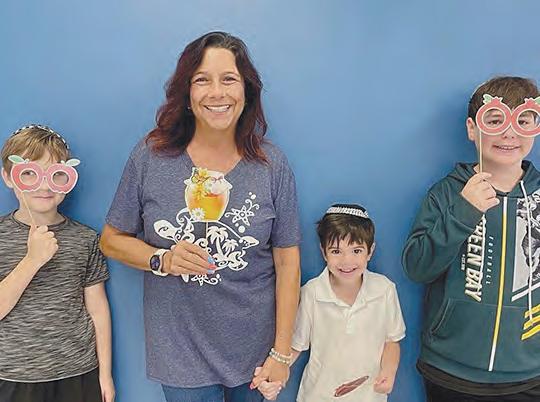


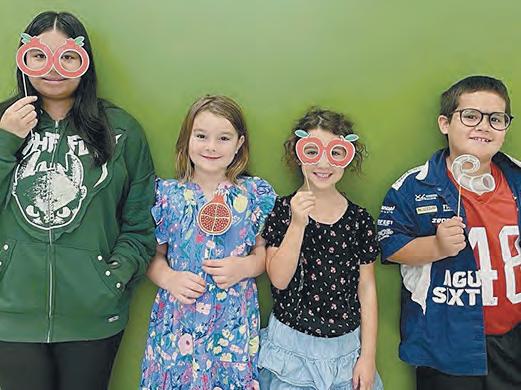




RBJH Director of Activities and Volunteer Services
At RBJH, Grandparents’ Day is far too special for just one date on the calendar; we stretch the celebration throughout the month and even beyond, filling September with joyful moments. Residents were treated to an incredible lineup of entertainment, including a Neil Diamond Tribute by Dan Reynolds, an outdoor concert from Milestones in Music, the always delightful Omaha Dancing Grannies, and Debbie
This Mezuzah case belongs to Robb and Holly Pearlman.
“Rob and I went shopping for a gift at Shalom House Fine Judaica in Woodland Hills CA.,” Holly told us. “As we were looking, we noticed these massive mezuzahs in a glass case. The sales person then told us the story of Mi Polin “From This Home" project which is a contemporary Judaica design studio founded in


Greenblatt’s beautiful renditions of Jewish Holiday music. Extra BINGO games, plus performances by Billy Troy and Wayne Miller, kept the energy high throughout. One of the biggest highlights was our full-scale Spa Day, where residents were pampered with massages, hair and makeup sessions, and special gifts for both women and men. The experience was captured with professional photographs taken by Mark Kirchoff, and each participant will receive a framed glamour shot to commemorate the occasion. None of this would have been possible without the generous support of the Sheldon and Lorrie Bernstein Endowment Fund, the Betty Studna and Seymour Lee Endowment Fund, and the Chester & Phyllis Lustgarten Endowment, all through the Jewish Federation of Omaha Foundation. And we’re not done yet, the fun will continue with a special concert each month to honor grandparents in style.
Warsaw by Helena Czernek and Aleksander Prugar.
“The salesperson then explained, these mezuzahs are from a mold taken from a doorpost of a former Jewish home in Poland, and are now being sold in some Judaica stores. Although we didn’t purchase a gift from the store, we did end up purchasing a mezuzah from Mi Polin’s collection.”
Are you thinking about your own case? We would love to hear from you, and see what is divinely protecting your scroll and your home. We hope you will feel inspired, and are ready to share your story with us.
For additional questions, please email Naomi Fox at nfox@jewishomaha.org, Pam Monsky at pmonsky@jew ishomaha.org, Jane Nesbit at jnesbit@ihene.org or Annette van de Kamp-Wright at avandekamp@jewishom aha.org
The Anti-Defamation League has removed an online resource guide about extremism, one day after Elon Musk escalated a wave of right-wing criticism against the group by criticizing an entry.
The deletion of the Glossary of Extremism and Hate was first reported Sept. 30 by Jewish Insider. The guide is no longer on the ADL’s homepage, and searches of its contents yield no results.
“With over 1,000 entries written over many years, the ADL Glossary of Extremism has served as a source of high-level information on a wide range of topics for years. At the same time, an increasing number of entries in the Glossary were outdated. We also saw a number of entries intentionally misrepresented and misused,” an ADL spokesperson told Jewish Insider in a statement. “At ADL, we always are looking for how we can and should do things better. That’s why we are moving to retire the Glossary effectively immediately. This will allow ADL to explore new strategies.”
said it rejected white nationalism and attracted white nationalist members.
Musk had been one of a number of conservatives, including lawmakers and Donald Trump Jr., to demand that the guide revise or remove its Turning Point USA entry. His criticism reached a new height on Monday when Musk tweeted a screenshot of the entry for “Christian Identity,” a small extremist movement that is not the same as Christianity, and said the ADL “hates Christians” and was “a hate group.”

The Anti-Defamation League's Glossary of Extremism and Hate was removed amid criticism from conservatives, Sept. 30, 2025. Credit: Screenshot
The glossary contained roughly 1,000 entries explaining leftand right-wing extremist groups and movements and the ideas they promulgate. An initiative of the ADL’s Center on Extremism, which grew out of the organization’s mission to protect Jews and also monitors online extremism and alerts authorities about potential threats, the glossary was widely cited by researchers, journalists and internet users seeking to better understand the extremism landscape.
In recent days, following the assassination of conservative activist Charlie Kirk, right-wing critics of the ADL had taken aim at the guide, complaining that it had characterized Kirk’s group Turning Point USA as an extremist organization. An entry for Turning Point USA in fact said that the group both
Musk’s outburst was notable because, as recently as January, the ADL had defended him after he appeared to make a Nazi-style salute during Donald Trump’s inauguration. At the time, the group called the gesture “awkward,” a comment that drew backlash within the Jewish community and from the group’s left-wing critics. (Those critics have lambasted the group for equating anti-Zionism with antisemitism.)
Prior to the guide’s deletion, the ADL had revised the Turning Point USA entry, including to include information about Kirk’s support for Israel, Jewish Insider reported.
An introduction to the guide, still available online, notes, “It is not all inclusive. Being included in this database does not mean that individuals or groups are engaging in illegal or violent conduct, but rather that in ADL’s judgment the views as exemplified by the statements made in support of those views can be considered extreme.”
The guide’s disappearance comes as the Trump administration has scaled back government spending on monitoring extremism. Kirk’s assassination took place the same day as a school shooting in Colorado allegedly by a gunman whose online activity had been flagged by a member of the ADL’s extremism monitoring division.




(Founded in 1920)
David Finkelstein
President
Annette van de Kamp-Wright
Editor
Will Fischer
Creative Director
Claire Endelman
Sales Director
Lori Kooper-Schwarz
Assistant Editor
Sam Kricsfeld
Digital support
Mary Bachteler
Accounting
Jewish Press Advisory Board
David Finkelstein, President; Margie Gutnik, Ex-Officio; Joseph Abrahams, Helen Epstein, Andrea Erlich, Ally Freeman, Dana Gonzales, Mary Sue Grossman, Hailey Krueger, Chuck Lucoff, Sara Rips, Melissa Shrago, Stewart Winograd and Bob Yaffe.
The mission of the Jewish Federation of Omaha is to build and sustain a strong and vibrant Omaha Jewish Community and to support Jews in Israel and around the world. Agencies of the JFO are: Institute for Holocaust Education, Jewish Community Relations Council, Jewish Community Center, Jewish Social Services, Nebraska Jewish Historical Society and the Jewish Press Guidelines and highlights of the Jewish Press, including front page stories and announcements, can be found online at: www.jewishomaha.org; click on ‘Jewish Press.’ Editorials express the view of the writer and are not necessarily representative of the views of the Jewish Press Board of Directors, the Jewish Federation of Omaha Board of Directors, or the Omaha Jewish community as a whole. The Jewish Press reserves the right to edit signed letters and articles for space and content. The Jewish Press is not responsible for the Kashrut of any product or establishment.
Editorial
The Jewish Press is an agency of the Jewish Federation of Omaha. Deadline for copy, ads and photos is: Thursday, 9 a.m., eight days prior to publication. E-mail editorial material and photos to: avandekamp@jewishomaha.org ; send ads (in TIF or PDF format) to: rbusse@jewishomaha.org
Letters to the Editor Guidelines
The Jewish Press welcomes Letters to the Editor. They may be sent via regular mail to: The Jewish Press, 333 So. 132 St., Omaha, NE 68154; via fax: 1.402.334.5422 or via e-mail to the Editor at: avandekamp@jewishomaha.org.
Letters should be no longer than 250 words and must be single-spaced typed, not hand-written. Published letters should be confined to opinions and comments on articles or events. News items should not be submitted and printed as a “Letter to the Editor.”
The Editor may edit letters for content and space restrictions. Letters may be published without giving an opposing view. Information shall be verified before printing. All letters must be signed by the writer. The Jewish Press will not publish letters that appear to be part of an organized campaign, nor letters copied from the Internet. No letters should be published from candidates running for office, but others may write on their behalf.
Letters of thanks should be confined to commending an institution for a program, project or event, rather than personally thanking paid staff, unless the writer chooses to turn the “Letter to the Editor” into a paid personal ad or a news article about the event, project or program which the professional staff supervised. For information, contact Annette van de Kamp-Wright, Jewish Press Editor, 402.334.6450.
Postal
The Jewish Press (USPS 275620) is published weekly (except for the first week of January and July) on Friday for $40 per calendar year U.S.; $80 foreign, by the Jewish Federation of Omaha. Phone: 402.334.6448; FAX: 402.334.5422.
Periodical postage paid at Omaha, NE. POSTMASTER: Send address changes to: The Jewish Press, 333 So. 132 St., Omaha, NE 68154-2198 or email to: jpress@jewishomaha.org
Editorials express the view of the writer and are not necessarily representative of the views of the Jewish Press Board of Directors, the Jewish Federation of Omaha Board of Directors, or the Omaha Jewish community as a whole.
ANNETTE VAN DE KAMP-WRIGHT
Jewish Press Editor
In the Dec. 15, 2023 edition of the Jewish Press, we ran a story about a man named Avinatan Or. Avinatan was kidnapped on Oct. 7, together with girlfriend Noa Argamani, who was rescued in June of 2024. While in New York, Rabbi Mendel and Shani Katzman met his mother Ditza, who asked everyone to keep Avinatan in their prayers. Ditza was part of a group of Israeli family members of hostages, flown to New York to draw attention to what was then still a fairly new situation. While writing the story, I put a small version of Avinatan’s poster on my office wall. And there, it has remained, to this day.
Sometimes I think about moving it to a different spot; sometimes I want to print off a bigger version. But I don’t; the picture has stayed in the exact same spot where I taped it to the wall almost two years ago. And although I have never met him and know little about him, after all this time he’s started to feel like family. I wonder how he is; I wonder if he is alive. I wonder if his loved ones will ever see him again. Because during the various, parceled-out actual returns of hostages, his name has never been on the list. It’s the first thing I check. He’s come close, but you know, “negotiations fell through.”
In March of this year, there was a glimpse of him, alive, in a tunnel somewhere in Gaza.
“One of the recently released hostages told Israeli authorities that he saw fellow hostage Avinatan Or alive while they were in captivity,” the Times of Israel reported, “marking the first public sign of life since
he was taken into captivity.” His teacher and friend Nili Bressler wrote a beautiful story about him for the same publication at the time. She called him a “Beacon of Light,” and if you read her words carefully, you can almost picture him there, hanging on.
We have all lived through a number of different narratives over the past two years. The immediate and intense grief we felt during the initial weeks and months has given way to that dreaded phrase: “a new normal.”

Credit: Flavio, licensed under the Creative Commons Attribution 2.0 Generic license.
I despise that expression, but I have no better words to explain it. It’s this feeling of “this is how things are now,” it’s what we reluctantly have become used to. The hate, the vitriol, the despair and the sheer exhaustion. So much has happened in the United States diaspora alone. We’ve had gaslighting and campus protests, an election and political upheaval, violence and murders; celebrities throwing in their two-cent opinions and increased security
at every Jewish place of worship, and then other funerals and holidays and simchas in-spite-of. One hundred and four shabbat dinners since Oct. 7.
The two-year mark feels a little bizarre, and I am grateful in 2023 we didn’t know it would all become this awful and permanent. Even were all the remaining hostages returned tomorrow, it wouldn’t erase the pain of the past two years.
Lest we forget, there are constant reminders of our reality. Perhaps one of the most annoying aspects about the recent antisemitic attack in Manchester was the lack of surprise we all felt. Shocking, yes; surprising; no. It was Yom Kippur; of course someone decided to do this. The attack was immediately followed by anti-Israel demonstrations in London, Rome, Barcelona. Because, why not?
And here we are, working hard to make our holidays meaningful and extra-Jewish, trying to double down and celebrate-in-spite-of. And we can’t look away, because then we might notice a government shut-down, trouble with ICE, and what was that about the breakup between the FBI and the ADL? It’s complicated.
It’s Sukkot, a holiday during which we are commanded to feel joy. Do we force ourselves to smile, even when we don’t feel like it? It’s a valid question. The truth is, the choice is not necessarily one between sadness and elation; we more often than not exist somewhere in the middle. It’s why we laugh at funerals, it’s why we connect with each other even while our hearts are breaking. We continue, in spite of everything. And yes, we smile. There is no other choice.
RABBI MICHAEL MEYERSTEIN
JTA
I last appeared before a judge 40 years ago when I tried fighting an “unjust” speeding ticket. That didn’t go so well. As they say, “He who represents himself has a fool for a client.” My takeaway: pay the fine and don’t add insult to injury by paying court costs.
But this year, in the waning days of Elul, when Jews began reflecting about the upcoming High Holiday season, I stood before three different judges — not in traffic court but in immigration court. And not as an attorney nor, thankfully, as a respondent — a foreign-born person charged by the Department of Homeland Security with violating immigration law and facing deportation proceedings.
No, I stood as a privileged white American naturalized citizen. I stood as an online-trained ABA court observer to monitor and document immigration court hearings, as a way of holding America’s court system accountable. I stood as a rabbi spiritually tormented by today’s troubling headlines and disturbing images regarding our government’s treatment of immigrants, the very strangers the Torah commands us 36 times to welcome. And I stood as a fellow human filled with empathy for those who bravely traversed perilous terrains, with children in tow, to reach the fabled, promised land of freedom, safety and opportunity.
Some respondents have bounced around the courts since 2013. Each appearance is fraught with fear, trembling, and angst about their fate. After all, a courtroom setting can be daunting and foreboding. I sat just 10 feet — or a virtual connection away — from these modestly dressed respondents who stare nervously at the judge. And I thought about the coming Yom Kippur holiday, when I would ponder God’s decree about me in the Book of Life. Would it be a decree of life or death, prosperity or hardship?
I quietly imagined these frightened immigrants reciting their own personalized version of our millennium-old Unetanah Tokef prayer:
Who shall live freely in America AND who shall be forcibly (or by self removal) shipped to countries rife with political persecution? Who shall remain united with loved ones AND who shall fester in a rat-infested jail cell? Who shall realize their fondest dreams AND who shall return to a land where op-
portunity is harvested only by the elite? Who shall have access to Costco’s abundances AND who shall barely survive on crumbs? Who shall leave the courtroom with renewed hope AND who shall leave hopeless? Who shall be lucky to get another deportation delay AND who shall be unlucky to receive notice of final removal from the United States?
A 50-ish woman from Central America appeared without counsel, because she couldn’t afford one. U.S. law stipulates that she’s entitled to one, but at her own expense. ICE agents came to her door looking for someone who did not live in the house. Perhaps seeing opportunity to meet a quota of arrests, they asked for papers she did not have. They hauled her away. Now, wearing an ankle monitor as a flight risk, she told the judge in broken English, in a barely audible, trembling voice: “I have lived here for 20 years. I have a family, a job. I’m not a terrorist.” The judge gave her another 60 days to find a lawyer, pro-bono or not. Or else.
the respondents and fair-minded decisions. I paused and told a story of my own. “With your honor’s permission, I’d like to give personal context to my appearance today,” I said. “I am in my 80s, a child of Holocaust survivors. In the late 1930s, my grandparents applied for a U.S. visa for asylum. They were denied. They were subsequently murdered by the Nazis.”

Masked ICE agents are seen in the corridors of Lower Manhattan's immigration court in New York City, Sept. 8, 2025. Credit: Selcuk Acar/Anadolu via Getty Images
A young woman said she wanted to self-deport. The judge, surprised, offered her more time to file papers attesting to her marriage to a U.S. citizen (possible grounds for relief from removal). She replied: “I already have tickets to fly back next week. I fear ICE agents may apprehend me outside this courtroom.”
The stories are heartbreaking. Only those with a hardened heart of Pharoah would be dismissive of the human tragedies revealed in their chilling stories.
Each day I listen intently while feverishly recording the courtroom’s verbal exchanges. I remind myself I’m here to assure a transparent and fair justice system. But will my modest contribution matter?
Suddenly, on that first day in court, a thought struck me. The ABA strictly forbids observers from interacting with anyone in the courtroom during hearings. What about after the last case is heard?
I slowly stood up behind the railing as the room emptied. Seeing me, the judge asked, “Do you wish to say something, sir?” “Yes, your honor. May I first compliment your Honor on today’s hearings?” Appearing a little stunned by this uncommon question, she replied, “Go ahead.” I proceeded to compliment her integrity, empathic exchange with
Silence. You could hear a pin drop. The judge, placing her hand over her heart, then replied: “I am truly sorry for your loss. Now I understand why you are here.”
Fleetingly, I felt as if I had spoken truth to power. Will that judge remember my words? I can only hope so, for the sake of future respondents who stand before her.
On this Yom Kippur, I pray that the Almighty above judge us mercifully, both individually and collectively as Jews, and renew us for another year in the Book of Life. May God’s abounding mercy soften the hearts of immigration judges across this land, and compassionately answer the fervent prayers of the strangers in our midst.
Rabbi Michael Meyerstein is a retired Conservative rabbi and former professional fundraiser. He lives in Bethesda, Maryland with his wife Israela, and they are surrounded by their three married sons and eight grandchildren who live nearby.
The views and opinions expressed in this article are those of the author and do not necessarily reflect the views of JTA or its parent company, 70 Faces Media.
In December 2023, Pamela Nadell, a professor of Jewish history at American University, testified alongside the presidents of Harvard, the University of Pennsylvania and MIT at a congressional hearing on antisemitism on college campuses.
At the time, Nadell was at work on a history of antisemitism in America, and couldn’t have known that she would become a supporting player in a key moment in that story. Now she has completed the book, Antisemitism, an American Tradition, in which she chronicles the different forms Jew-hatred has taken from colonial times to the present.
Puncturing the largely flattering story of an America that created the conditions for Jews to flourish as never before, the book shows, she writes, “how powerfully antisemitism has coursed throughout American history and how much it impacted the lives of America’s Jews no matter where they lived.”
It’s a history that includes Peter Stuyvesant’s efforts to oust the 23 Jews who had recently landed in what is now New York in 1654; the discrimination Jews faced in the Revolutionary and Civil War eras; the anti-immigration fervor of the early 20th century; the virulent isolationism and pro-Nazism of the 1930s and 1940s, and the purported “Golden Age” that saw Jews come into their own after World War II.
It concludes with the current-day explosion of antisemitism on the right and the left: the shootings at the Tree of Life synagogue in Pittsburgh and the white power marches in Charlottesville, Virginia; pro-Palestinian demonstrations that, she writes, “erased” the line between anti-Zionism and antisemitism, and the killing of two Israeli embassy staffers outside a Jewish event in Washington, D.C.
While Nadell believes that Jews are facing a “high tide” in terms of the psychological impact of what others have called the “enduring hatred,” she also stresses that hers is not a “postOct. 7” book. If anything, the impetus for writing the book was a remark made by a colleague years before the start of the current Israel-Hamas war, who noted how antisemitism appeared to be “all over” her previous book, America’s Jewish Women: A History from Colonial Times to Today.
Nadell also believes her book is one of the first to see American antisemitism through the eyes of its victims. While Jews have flourished since World War II, she takes seriously their hard-to-account-for but persistent insecurity. Call it paranoia, but the psychological impact of antisemitism, despite the Jews’ outward signs of prosperity, is “profound,” she said. “It shapes how Jews live their lives.”
Nadell, 73, is professor and Patrick Clendenen Chair in Women’s and Gender History at American University in Washington, D.C. She is a past president of the Association for Jewish Studies.
In our recent conversation, we talked about the distinction she makes between anti-Zionism and antisemitism, why the post-war years were less golden than they seemed and how the Trump administration is using antisemitism in its efforts to remake American universities.
The interview has been edited for length and clarity. Why did you decide to call the book “Antisemitism, an American Tradition”? What does that phrase capture?
The phrase is a nod to historian Tony Michels, who wrote an important article about 15 years ago pointing out that American Jewish historians had essentially ignored antisemitism in our histories. We wrote hundreds of books about how Jews engaged with America, but because we were products of our own time, we didn’t foreground antisemitism. Then Charlottesville happened, and then Tree of Life. After Tree of Life, many of us were meeting at the Center for Jewish History, under the auspices of the American Jewish Historical Society, and we wondered: How had we missed the story? What are some of the myths your book punctures about antisemitism in America?
I think many readers will be surprised by the persistence of Christian anti-Judaism, which surfaces from the very beginning, and why I write that it was carried over in the rucksacks of the colonists.
The other myth is that antisemitism in America was never or rarely violent. People think of the Holocaust, pogroms or the Inquisition when they hear “antisemitism,” and assume that American antisemitism was different and somehow benign. It was different, yes, but not harmless. Local attacks, arson, murders — they often never reached the national press, but they happened. Can you unpack the distinction between Christian antiJudaism and other forms of antisemitism?
They differ tremendously. I use the word “antisemitism” throughout, but it wasn’t coined until the 1870s. “Anti-Judaism” is theological, rooted in the charge that Jews killed Jesus. “Antisemitism,” as coined by Wilhelm Marr and others in Europe, was race-based — a belief that Jews were a racial threat to society, but they’re not looking to blame them for the murder of Jesus. In America, because the debate over whether we are a Christian nation has never gone away, Christian anti-Judaism and antisemitism are braided together. I didn’t watch the fu-
neral of Charlie Kirk, but I did read about the comments [by Tucker Carlson] repeating the gospel stories about the Jews murdering Jesus. Evangelical support for Israel, for example, is tied to their belief in the coming of the Messiah. So I don’t think you can separate them.
I am always amazed, and was so in reading your book, about how both the right and left have variously used antisemitism and anti-Jewish conspiracy theories as a proxy for whatever else might be fanning the flames of their extremism — economic discontent, isolationism, nativism, anti-capitalism, anti-colonialism. I almost see that as the defining feature of “American” antisemitism, and wonder if you agree.
That’s right, but it’s not unique to America. In Europe, you have “The Protocols of the Elders of Zion,” the Dreyfus Affair, Soviet antisemitism. Antisemitism flourishes on both the right and the left. That’s something I was careful to stress, because as I was finishing the book — I was writing the book in 2022 and 2023 — Oct. 7 happened, and suddenly all the focus was on antisemitism on the left, especially on campuses. But antisemitism from the right is just as virulent. American history shows it’s always been present on both sides.

But I guess my question is also about that most perennial of questions: Why the Jews? Why does this small minority become the scapegoat again and again?
Robert Wistrich called antisemitism “the longest hatred.” Antisemitism adapts. Whatever people are unhappy about, they can map it onto Jews. In a New Yorker interview with Isaac Chotiner, David Nirenberg [author of Anti-Judaism: The Western Tradition] tells the story of being on the subway a few weeks after 9/11. One rider said, “It’s the Jews’ fault — they made New York the capital of capitalism.” The other replied, “And because they killed Jesus.” You can’t separate the motives. One is economic, the other theological, but they converge on Jews.
Henry Ford is the classic American example: Whatever was wrong with society, he blamed on Jews.
You devote a chapter to what some call the postwar “Golden Age” of American Jewry, but warn in the chapter title, “No Age is Golden.” What led Jews to talk about that era, roughly from the end of World War II to the 1970s, or maybe to the year 2000, as a halcyon time, and in what ways did it fall short?
It depends on how you look at it. It didn’t happen overnight. Gentleman’s Agreement [Laura Z. Hobson’s novel that, Nadell writes, “would expose the disgrace of genteel American antisemitism”] came out in 1947, but quotas and restrictions lingered for years. Still, real changes happened: It’s a golden age because so many of the structural barriers to Jewish success in America ultimately fell. Country clubs admitted Jews, elite universities dropped quotas, the Fair Housing Act meant restrictive housing covenants were no longer enforced, Jews rose to leadership in business and politics. We get a vice-presidential candidate who’s Jewish, and a [Senate majority leader] who is a proud Jew. So that’s the reason for the perception of the Golden Age.
But when I talk to Jews who lived through that era, I hear a different story. People remember being pelted with pennies, taunted with slurs. After Oct. 7, I kept hearing from people who said, “I never thought I’d live to see this,” and yet, in the same breath, recalled childhood antisemitism. So the Golden Age was real, but it was also never free of hatred.
If some saw the post-war years as the high point in terms of Jewish acceptance, of their cultural and political impact, what was the nadir?
Historians long called the 1930s the “high tide” of American antisemitism — plots to hang Jews in Hollywood, pro-Nazi rallies, Father Coughlin [the influential antisemitic priest] on the radio. But I’ve been saying for a while now that we may have to rename that period. Because of antisemitism from both left and right, and especially because of social media, I think we are living through a new high tide of American antisemitism right now. That’s because of the violence coming from both the right and the left. I’d like to push back on that somewhat: Despite the violent attacks in Pittsburgh and Poway, California, and the eruption of anti-Zionism on campuses and in the streets, Jews are disproportionately successful. Jews have flourished in academia and in the professions, law firms hire Jews, most Jews live in prosperous neighborhoods. Does antisemitism really have the power to affect Jewish lives?
You mean structurally?
Yes, that’s a better way to ask the question. Structurally, no. Jews are not going to face quotas in universities again. But I come at this from a slightly different angle. When I toured for my last book, I began asking audiences if they had ever experienced antisemitism. The stories poured out — incidents from 50 years earlier, told in vivid detail, with pain and anguish. What jumped out at me then, and what I have said publicly since, is that — even if other people want to say their anti-Israel positions are not antisemitic — it’s how Jews internalize what they face as antisemitic that has a lasting effect on Jewish lives. Now, some of this may be because I’m married to a clinical psychologist, but what we’re seeing now is that, psychologically, the impact is profound. It shapes how Jews live their lives. I keep reading all these studies of the numbers of Jews who won’t disclose that they’re Jewish.
My son told me recently he was in an Uber. I called him and said, “Shana Tova.” He answered, “You too.” Later he admitted he hadn’t wanted to say “Shana Tova” out loud in front of the driver. That’s how antisemitism affects Jewish lives — by shaping behavior, by instilling caution.
The current debate — and any present or future assessment of the degree to which we are living through a new wave of antisemitism — often centers on when anti-Zionism crosses a line to become antisemitism. The AntiDefamation League has its own way of determining when an act is antisemitic or not. What criteria did you use in describing an act or statement as antisemitism?
For me, calling for Israel’s destruction is absolutely antisemitism. Criticizing Israeli policies is not — Israelis themselves do that every day. But increasingly, “Zionist” has become a slur, a new code word, just as “Jew” was pejorative in the 19th century, so that Jews themselves preferred to call themselves “Israelites.” NYU’s student conduct code even recognizes that “Zionist” can be used as a term of hate.
But an anti-Zionist Jew, for example, might argue that they don’t have an issue with an individual’s religious beliefs or biology, but are opposing anyone who chooses to support what they consider an oppressive, colonialist state.
I’ve been in conversations with colleagues who have done that, saying “Oh, I’m not an antisemite, but Israel has no right to exist.”
How do you respond?
My response is, “You and I are never going to agree on this.” Your book is not prescriptive, but did you find a common theme in what approaches work best to combat antisemitism?
What hasn’t worked is the belief that education will end antisemitism — “If only people knew the Jews, they wouldn’t hate us.” That’s been said since the 19th century. Now we have a huge new National Endowment for the Humanities grant [to the conservative Tikvah], NEH’s largest grant ever, which is going to educate about the Jews and that is optimistic that educating about the Jews will change people’s attitudes towards them. And yet the reality is, Jews are the most favorably regarded religious group in Pew surveys, yet millions of Americans still hold antisemitic stereotypes.
What does help is allies. When government or institutions act, antisemitism can be checked. But there will always remain that irreducible percentage of people — maybe 10% of Americans — who hold strong antisemitic beliefs.
Speaking of allies, as a historian, have you ever seen anything similar to what’s going on now where the government is committed to fighting antisemitism, but is doing it in a way that’s going right at your livelihood — that is, punishing universities and withholding federal funds and using antisemitism as, depending on your politics, a reason or an excuse for demanding changes, from scrapping DEI programs to disclosing “foreign influence” to banning transgender students from women’s sports.
Have you seen this before and, to ask another perennial question, is it good for the Jews?
It’s bad for the Jews. You’ll recall that in December 2023, I testified alongside the university presidents — two of whom later lost their jobs. Just a month before, Trump was campaigning on taxing university endowments to fund a new “anti-woke” university. That idea went into the dustbin, but antisemitism became the pretext for going after higher education. In 2021 J.D. Vance gave a speech saying conservatives need to “aggressively attack the universities.” Antisemitism is giving them the coverage to do that now.
With all this in mind, are you optimistic or pessimistic about the Jews’ place in America and the waning of antisemitism?
I take solace in history. After the high tide of the 1930s, things improved. My hope is that will happen again. My concern is the unprecedented role of social media, which amplifies antisemitism in ways we’ve never experienced. Campus encampments declined last year, vandalism declined, but antisemitism online exploded. That’s what worries me most. Andrew Silow-Carroll is editor at large of the New York Jewish Week and managing editor for Ideas for the JTA.
B’NAI ISRAEL SYNAGOGUE
618 Mynster Street Council Bluffs, IA 51503-0766
712.322.4705 www.cblhs.org
BETH EL SYNAGOGUE
Member of United Synagogues of Conservative Judaism 14506 California Street Omaha, NE 68154-1980
402.492.8550 bethel-omaha.org
BETH ISRAEL
SYNAGOGUE
Member of Union of Orthodox Jewish Congregations of America 12604 Pacific Street Omaha, NE. 68154
402.556.6288 BethIsrael@OrthodoxOmaha.org
CHABAD HOUSE
An Affiliate of Chabad-Lubavitch 1866 South 120 Street Omaha, NE 68144-1646
402.330.1800 OChabad.com email: chabad@aol.com
LINCOLN JEWISH COMMUNITY:
B’NAI JESHURUN
South Street Temple
Union for Reform Judaism 2061 South 20th Street Lincoln, NE 68502-2797
402.435.8004 www.southstreettemple.org
OFFUTT AIR
FORCE BASE
Capehart Chapel 2500 Capehart Road Offutt AFB, NE 68123
402.294.6244 email: oafbjsll@icloud.com
TEMPLE ISRAEL
Union for Reform Judaism (URJ) 13111 Sterling Ridge Drive Omaha, NE 68144-1206
402.556.6536 templeisraelomaha.com
LINCOLN JEWISH COMMUNITY:
TIFERETH ISRAEL
Member of United Synagogue of Conservative Judaism 3219 Sheridan Boulevard Lincoln, NE 68502-5236 402.423.8569 tiferethisraellincoln.org
Monthly Speaker Series Service, Friday, Oct. 10, 7:30 p.m. with our guest speaker. Our service leader is Larry Blass. Everyone is always welcome at B’nai Israel! For information about our historic synagogue, please visit our website at www.cblhs.org or contact any of our other board members: David Alloy, Renee Corcoran, Rick Katelman, Gail Kenkel, Janie Kulakofsky, Howard Kutler, Ann Moshman, Mary-Beth Muskin, Debbie Salomon and Sissy Silber. Handicap Accessible.
Services conducted by Rabbi Steven Abraham and Hazzan Michael Krausman.
IN-PERSON AND ZOOM MINYAN SCHEDULE:
Mornings on Sundays, 9:30 a.m.; Mondays and Thursdays 7 a.m.; Evenings on Sunday-Thursday 5:30 p.m.
FRIDAY: Pre-Neg & Tot Shabbat, 5:30 p.m.; Kabbalat Shabbat 6 p.m. at Beth El & Live Stream.
SATURDAY: Shabbatsana Yoga, 9 a.m.; Sukkot/ Simcha Shabbat Service with Yizkor (Pink Shabbat), 10 a.m. at Beth El and Live Stream; Jr. Congregation (Grades K-12), 10 a.m.; Havdalah, 7:25 p.m. Zoom Only.
SUNDAY: BESTT (Grades K-7) 9:30 a.m.
MONDAY: Hoshanah Rabbab Morning Service, 7 a.m. at Beth El & Zoom; Mincha/Ma’ariv, 5:30 p.m. at Beth El & Live Stream.
TUESDAY: Beth El Office Closed; Shmini Atzeret Morning Service 10 a.m.; Mincha/Ma’ariv, 5:30 p.m. at Beth El & Live Stream followed by Hakafot & Reception; SimTot Torah, 5:30 p.m
WEDNESDAY: Beth El Office Closed; Simchat Torah Morning Service, 10 a.m.; No evening minyan tonight.
FRIDAY-Oct. 17: Kabbalat Shabbat 6 p.m. at Beth El & Live Stream.
SATURDAY-Oct. 18: Bar Mitzvah of Issac Sherman, 10 a.m. at Beth El and Live Stream; Jr. Congregation (Grades K-12), 10 a.m.; Havdalah, 7:15 p.m. Zoom Only.
Please visit bethel-omaha.org for additional information and service links.
FRIDAY: Nach Yomi, 6:45 a.m.; Shacharit, 7 a.m.; Mincha/Kabbalat Shabbat/Candlelighting, 6:34 p.m.
SATURDAY: Shabbat Kollel, 8:30 a.m.; Shacharit, 9 a.m.; Tot Shabbat 10:30 a.m.; Youth Class 10:45 a.m.; Soulful Torah, 5:35 p.m.; Mincha, 6:20 p.m.; Kids Activity/Laws of Shabbos 6:50 p.m.; Havdalah, 7:32 p.m.
SUNDAY: Shacharit, 9 a.m.; Mincha/Ma’ariv, 6:30 p.m.
MONDAY: Nach Yomi, 6:45 a.m.; Shacharit, 7 a.m.; Candlelighting/Mincha/Ma’ariv, 6:29 p.m.
TUESDAY: Office Closed; Shacharit, 9 a.m.; Yizkor, 10:30 a.m.; Kids Davening, 10:45 a.m.; Kiddush, 11:30 a.m.; Mincha/Ma’ariv 6:30 p.m.; Candlelighting, 7:27 p.m.
WEDNESDAY: Office Closed; Shacharit, 9 a.m.; Simchat Torah/Hakafot, 10 a.m.; Kiddush, noon; Havdalah, 6:26 p.m.; Mincha/Ma’ariv, 6:30 p.m.
THURSDAY: Nach Yomi, 6:45 a.m.; Shacharit, 7
a.m.; Mincha/Ma’ariv 6:30 p.m.
FRIDAY-Oct. 17: Nach Yomi, 6:45 a.m.; Shacharit, 7 a.m.; Mincha/Kabbalat Shabbat/Candlelighting, 6:23 p.m.
SATURDAY-Oct. 18: Shabbat Kollel, 8:30 a.m.; Shacharit 9 a.m.; Tot Shabbat 10:30 a.m.; Youth Class 10:45 a.m.; Soulful Torah, 5:25 p.m. with Rabbi Geiger; Mincha, 6:10 p.m.; Kids Activity/Laws of Shabbos 6:40 p.m.; Havdalah, 7:21 p.m.
Please visit orthodoxomaha.org for additional information and Zoom service links.
Join classes via Zoom. Go to ochabad.com/academy. For more information or to request help, please visit www.ochabad.com or call the office at 402.330.1800.
FRIDAY: Shacharit, 8 a.m.; Lechayim, 5:30 p.m., go to ochabad.com/lechayim to join; Candlelighting, 6:32 p.m.
SATURDAY: Shacharit 10 a.m. followed by Kiddush and Cholent; Shabbat Ends, 7:30 p.m.
SUNDAY: Sunday Morning Wraps, 9 a.m.; Sunday Pod — Sukkot Street Festival, 9:30 a.m. RSVP by text ing‘Sunday Pod’ to 402.215.5240.
MONDAY: Shacharit, 8 a.m.; Candlelighting, 6:27 p.m.; Hakafot, 7 p.m.
TUESDAY: Morning Services with Yizkor, 10 a.m.; Candlelighting after, 7:25 p.m.; Young Professionals’ Drinks and Dancing, 8 p.m.
WEDNESDAY: Services, 11 a.m.; Lunch Hours with Simchat Torah, noon; Holiday Ends, 7:23 p.m.
THURSDAY: Shacharit, 8 a.m.; Advanced Biblical Hebrew Grammar, 11 a.m. with Prof. David Cohen; Talmud Study, noon-1 p.m.; Introduction to Alphabet, Vowels & Reading Hebrew, 6 p.m. with David Cohen; Code of Jewish Law Class, 7 p.m.
FRIDAY-Oct. 17: Shacharit 8 a.m.; Lechayim, 5:30 p.m., go to ochabad.com/lechayim to join; Candlelighting, 6:21 p.m.
SATURDAY-Oct. 18: Shacharit, 10 a.m. followed by Kiddush and Cholent; Shabbat Ends, 7:19 p.m.
LINCOLN JEWISH COMMUNITY: B’NAI JESHURUN & TIFERETH ISRAEL
Services facilitated by Rabbi Alex Felch. All services offered in-person with live-stream or teleconferencing options.
FRIDAY: Sukkot Shabbat Service, 6:30 p.m. followed by Sukkot Shabbat dinner at TI; Shabbat Candlelighting, 6:36 p.m.
SATURDAY: Shabbat Service , 9:30-11 a.m. led by Rabbi Alex at TI; Torah Study, noon; Havdalah, 7:33 p.m.
SUNDAY: No LJCS Classes — Fall Break; Men’s Bike/Coffee Group, 10:30 a.m. at The Mill Coffee & Bistro, 2021 Transformation Dr #1350, Lincoln. For more information or questions please email Al Weiss at albertw801@gmail.com
TUESDAY: Offices Closed; Shemini Atzeret Morning Service Yizkor, 9:30 a.m. at TI; Simchat Torah Service and LJCS Consecration, 6:30 p.m. at TI
WEDNESDAY: Offices Closed; Men’s Lunch Group, 12:15 p.m. at Horisun Hospice, 8055 O St #300, Lin-
coln. We meet in the conference room. Bring your own lunch and beverage. For more information, contact Albert Weiss at albertw801@gmail.com; No Hebrew School — Fall Break
FRIDAY-Oct. 17: Ruth Muriello Bat Mitzvah; Kabbalat Shabbat Service, 6:30-7:30 p.m. led by Rabbi Alex at SST; Shabbat Candlelighting, 6:25 p.m.
SATURDAY-Oct. 11: Ruth Muriello Bat Mitzvah; Shabbat Service, 9:30-11 a.m. led by Rabbi Alex at TI; Torah Study, noon on Parashat Bereshit; Potluck Dinner and Family Game Night, 6 p.m at SST. Please bring a dish to. share for Potluck. Games are available to play, but feel free to bring one of your favorites; Havdalah, 7:22 p.m.
FRIDAYS: Virtual Shabbat Service, 7:30 p.m. every first and third of the month at Capehart Chapel. Contact TSgt Jason Rife at OAFBJSLL@icloud.com for more information.
In-person and virtual services conducted by Rabbi Benjamin Sharff, Rabbi Deana Sussman Berezin, and Cantor Joanna Alexander.
FRIDAY: Drop-In Mah Jongg, 9 a.m. In-Person; Tot Shabbat, 5:45 p.m. In-Person; Shabbat B’yachad Service, 6 p.m. In-Person & Zoom
SATURDAY: Torah Study, 9:15 a.m. In-Person & Zoom; Shabbat Morning Service, 10:30 a.m. In-Person & Zoom; Atid Event: Sushi in the Sukkah, 6:30 p.m. RSVP Required.
SUNDAY: Grades PreK-7, 9:30 a.m. In-Person.
MONDAY: Community Simchat Torah Dinner and Celebration, 6 p.m. In-Person.
TUESDAY: Simchat Torah Service and Yizkor, 10 a.m. In-Person & Zoom.
WEDNESDAY: Yarn It, 9 a.m. In-Person; Grades 36, 4:30 p.m. In-Person; Hebrew Chai: Grades 8-12, 6 p.m. In-Person; October 8: A Screening, 6:30 p.m. InPerson.
THURSDAY: Interfaith Dialogue Experience featuring Rabbi Dr. Reuven Firestone and the Emerging Clergy Cohort-Lunch & Learn: “Abraham: the First Jew? First Christian? First Muslim?”, noon RSVP Required. — In-Person.
FRIDAY-Oct. 17: Drop-In Mah Jongg, 9 a.m. In-Person; Shabbat Dinner with TISH, 6 p.m. RSVP Required; Shabbat Shira Service, 6 p.m. In-Person & Zoom
SATURDAY-Oct. 18: Torah Study, 9:15 a.m. In-Person & Zoom; Shabbat Morning Service and Bat Mitzvah of Emmy Howell 10:30 a.m. In-Person & Zoom. Please visit templeisraelomaha.com for additional information and Zoom service links.
UPDATED OBITUARY CHANGES
As of July 1, 2025, Obituaries in the Jewish Press are free of charge. For questions, please email avandekamp@ jewishomaha.org. Obituaries in the Jewish Press are included in our print edition as well as our website at www.omahajewishpress.com
JTA
German police arrested three suspected members of Hamas in Berlin on Tuesday who they said were plotting to attack Jewish and Israeli institutions in the country on behalf of the terror group.
The suspects, who were arrested one day before Yom Kippur, were identified by Germany’s federal prosecutor’s office as Abed Al G, Wael F M and Ahmad I. Two are German citizens, and the other is an immigrant originally from Lebanon.
The men, two of whom are German citizens and one of Lebanese origin, are suspected of gathering firearms and ammunition over the summer to allegedly be used in the attacks.
During the arrests, the federal prosecutor’s office said that “various weapons, including an AK 47 assault rifle and several pistols, and a significant amount of ammunition, were found,” adding that those weapons were “intended for use by Hamas in assassination attacks on Israeli or Jewish institutions in Germany.”
The Israeli foreign intelligence agency Mossad
said that it had collaborated with the German government in the arrests. It said the sting operation was “part of an extensive Mossad effort throughout Europe during which weapons caches were located and further arrests were made of operatives suspected of terrorist offenses.”
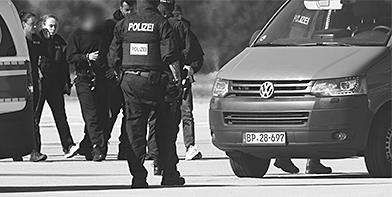
In February, four Hamas members suspected of plotting on Jewish institutions in Europe went on trial in Berlin, marking the first court case against Hamas operatives in the country. Months later in July, a Danish citizen of Afghani descent was arrested in Denmark for allegedly helping Iran plan attacks on Jewish targets in Berlin.
Police officers lead a suspected Hamas operative (3rd from left) from a helicopter to a police van. Yesterday, the Federal Prosecutor General had three suspected members of the Islamist terrorist organization Hamas arrested. The men will be brought before the Federal Court of Justice in Karlsruhe today. Credit: Philipp von Ditfurth/picture alliance via Getty Images
And in December 2023, seven men were arrested in Germany, the Netherlands and Denmark for allegedly planning terror attacks against Jews and Jewish sites. Some of those arrested were longtime Hamas operatives who had been building up a sup-
ply of weapons, German officials said at the time.
Hamas said in a statement that the allegations that the individuals were affiliated with the terror group were “baseless” and accused them of aiming to “undermine the German people’s sympathy for the Palestinian people.”
A recent poll found that 62% of Germans view Israel’s actions in Gaza as a genocide, more than in the United States which like Germany is a staunch ally of Israel. Fueled in part by its commitments following the Holocaust, Germany did not join several other major European countries in recognizing Palestinian statehood at the United Nations General Assembly last month.
TATE JOHNSON
Tate Johnson, son of Andrea and Chad Johnson, will celebrate his Bar Mitzvah on Saturday, Oct 11, 2025, at Bna’i Jeudah in Overland Park, Kansas.
Tate is a seventh grader at Indian Woods Middle School.
Tate plays soccer and golf and also wrestles.
For his mitzvah project he donated school supplies to Scraps KC in Kansas City.
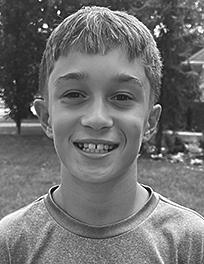
Grandparents are Barbara Goodman of Overland Park, KS, Arlene and Paul Cohen of Omaha and Darla and Mickey Johnson, of Mission, KS.
ISAAC SHERMAN
Isaac Sherman, son of Ali Sherman, will celebrate his Bar Mitzvah on Saturday, Oct. 18, 2025, at Beth El.
Isaac is an eighth-grade honor roll student at Millard North Middle School. At school, he enjoys participating in quiz bowl, serving as a peer role model in unified sports, and playing the viola.
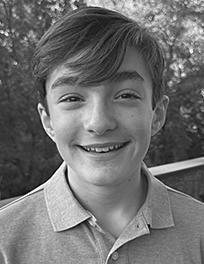
In his spare time, Isaac enjoys playing video games, time outside, and attending camp Sabra. He is a wonderful role model to his younger brother, Noah.
Inspired by his two dogs, for his mitzvah project, Isaac has set his sights on helping the Nebraska Humane Society. He has focused on volunteering, fundraising, collecting items to donate and creating engagement activities for the animals.
Grandparents are Patty Sherman and the late Michael Sherman of Omaha.
Dear Editor, "Torn: the Israel-Palestine Poster War on New York City Streets" will be shown at the JCC on Nov. 2nd. Here in NYC we see that battle continuing two years after the 10/7 attack. Besides the shreds of posters and stickers of those kidnapped by Hamas lining the streets in our neighborhood, other pro-Israel or pro-Hamas stickers are constantly going up on lampposts and being ripped down. For almost two years, the hate and assault case against Mehwish Omer and Stephanie Gonzalez has been grinding through the New York State Supreme Criminal Court in Manhattan. This dastardly duo attacked a Jewish woman who criticized them for tearing down the very kidnapped posters which "Torn" depicts. The story is far from over.
GLENN & LENORE RICHTER of NYC
The article about Beth Israel’s holiday schedule in the Oct. 3, 2025 edition of the Jewish Press contained a few errors. The intermediate days of Sukkot are through Monday, Oct. 13 instead of Oct. 21. Erev Shemini Atzeret begins the evening of Oct. 13; Shemini Atzeret services are Tuesday Oct. 14. There will be no ice cream social following services. The final day of the chagim is celebrated with Simchat Torah on Oct. 15. The Jewish Press regrets these errors.
Announcements may be e-mailed to the Press at jpress@jewishomaha.org. Readers may also submit announcements (births, b’nai mitzvahs, engagements, marriages, commitment ceremonies or obituaries) at www.omahajewishpress.com/site/forms/. Click on “Jewish Press” and go to Submit Announcements.
PHILISSA CRAMER
JTA
President Donald Trump’s announcement of a peace plan in the Israel-Hamas war on September 29 was missing one crucial element, he said: “Now we just have to get Hamas.”
Now, observers of the region – including families of the 48 hostages who remain in Gaza and would be freed swiftly under the plan — are holding their breath to see whether Hamas will sign on.
The group that governs Gaza and orchestrated the Oct. 7, 2023, attack on Israel faces strong pressure to do so. A number of Arab and Muslim states — including Hamas backers Qatar and Turkey — have endorsed the 21-point plan.
Initially, Hamas said only that it is reviewing the plan, which it said was formally presented to its negotiators only after Trump’s joint press conference with Israeli Prime Minister Benjamin Netanyahu, and that a response could take several days. The group is reviewing the proposal “responsibly,” the Arab news organization al-Jazeera reported on Sept. 30.
to an independent state.
In a video that he posted online after leaving the White House, Netanyahu said the new plan represented Israel’s vision — and a turnaround from when the White House was pressuring it to accept Hamas’ terms to end the war.
On Oct. 3, Hamas said it was prepared to release all Israeli hostages to bring about an end to the war in Gaza.
It is not clear whether Hamas’ position will satisfy Trump, who warned the group earlier in the day that it had until Sunday Oct. 5 at 6 p.m. to accept his proposal. If it does not, he wrote on Truth Social, “All HELL, like no one has ever seen before, will break out against Hamas.”

Israeli Prime Minister Benjamin Netanyahu's speech is seen on a podium following a joint press conference between him and U.S. President Donald Trump at the White House, Sept. 29, 2025.Credit: Win McNamee/Getty Images
If Hamas accepts the plan, the group will be agreeing to disarm and cede control of Gaza — but its leaders will be allowed to leave the enclave and hundreds of its most sought-after members will be freed from Israeli prisons.
If it rejects the deal, Israel would have Trump’s backing to continue its offensive in Gaza City and elsewhere in the enclave. Israel would also have politically isolated Hamas and have wound up on the same side of an issue as a vast array of world leaders who have recently sought to pressure the country to abandon the war.
Netanyahu’s White House visit included a phone call among him, Trump and Qatari Prime Minister Mohammed Al Thani in which he apologized for striking Doha earlier this month in an unsuccessful bid to kill Hamas’ leaders and pledged not to strike in Qatar again.
Netanyahu reportedly achieved multiple changes to the plan in days of talks with White House negotiators, including scaling back the requirements around Israel’s withdrawal from Gaza; strengthening the terms around Hamas’ disarmament; and removing the Palestinian Authority as a possible administrator of postwar governance in the enclave. He also said he had vowed to block the creation of a Palestinian state, though the Trump plan calls for working toward a “credible pathway”
In its statement, posted online on Friday night, Oct. 3, Hamas said it is prepared to hand control of Gaza, where it has battled Israel since it attacked Israel from the strip on Oct. 7, 2023, over to a “Palestinian body of independents (technocrats).” It said it is ready to discuss other elements of Trump’s plan but not yet to agree to them — and it is demanding a seat at the table as they are negotiated.
“As for the other issues mentioned in President Trump’s proposal concerning the future of the Gaza Strip and the authentic rights of the Palestinian people, this is linked to a comprehensive national position and based on relevant international laws and resolutions, and it will be discussed through a comprehensive Palestinian national framework of which Hamas will be a part and to which it will contribute with full responsibility,” the group said in a statement posted online.
Trump and Netanyahu emphasized in their comments that there could be no role for Hamas in Gaza’s future. Trump said that he personally would helm a “Board of Peace” to transition Gaza to a postwar governance structure, with former British Prime Minister Tony Blair at his side — hardly Palestinian technocrats. And Hamas’ statement does not address a key demand reportedly inserted by Netanyahu, that Hamas disarm entirely.
Still, the statement offers hope of freedom for the 48 Israeli hostages who remain in Gaza, all but one taken on Oct. 7, of whom up to 20 are thought to remain alive.
The hostages have been a centerpiece of advocacy by Israelis and Jews around the world, and the vast majority of Israelis favor a deal to end the Gaza war and return all of the hostages.




CLASSIFIED ADVERTISING works! Place your 25 word ad into thousands of Nebraska homes for $225. Contact the Jewish Press or call 1-800-369-2850.
HELLO NEBRASKA! Introducing www.nepublicnotices.com, a new public notice website presented as a public service by all Nebraska newspapers. Free access, fully searchable – because democracy depends upon open government and your right to know.
BANKRUPTCY RELIEF! Help stop Creditor Harassment, Collection Calls, Repossession and Legal Actions! Speak to a Professional Attorney and Get the Help You NEED! Call NOW 844-215-3629
AFFORDABLE PRESS Release service. Send your message to 155 newspapers across Nebraska for one low price! Call 1-800369-2850 or www.nebpress.com for more details.
PORTABLE OXYGEN Concentrator? May be covered by Medicare! Reclaim independence and mobility with the compact design and long-lasting battery of Inogen One. Free information kit! Call 855-385-3580.
GUN SHOW: October 17-19, 2025, Westfair, Council Bluffs, IA Fri 4-9pm, Sat. 9am-5pm, Sun. 9am-3pm. $10 (under 12 FREE) . More info: 563-608-4401 www.marvkrauspromotions.net
DOES YOUR basement or crawl space need some attention? Call Thrasher Foundation Repair! A permanent solution for waterproofing, failing foundations, sinking concrete and nasty crawl spaces. FREE Inspection & Same Day Estimate. $250 off ANY project with code GET250. Call 1-844-958-3431
PREPARE FOR power outages today with a Generac Home Standby Generator. Act now to receive a FREE 5-Year warranty with qualifying purchase. Call 1-402-899-2584 today to schedule a free quote. It’s not just a generator. It’s a power move.
THE BATHROOM of your dreams in as little as 1 day. Limited Time Offer - $1000 off or No Payments and No Interest for 18 months for customers who qualify. BCI Bath & Shower. Many options available. Quality materials & professional installation. Senior & Military Discounts Available. Call Today! 1-855-451-2244
WANTED TO BUY
WE BUY 8,000 cars a week. Sell
JFO Library Specialist
On Thursday, Oct. 16 at 1 p.m., the Dorothy Kaplan Book Discussion Group will hold its monthly meeting at the Staenberg Omaha Jewish Community Center. Participants may attend in person or join virtually via Zoom. This month’s selection is Half Life by Jillian Cantor, a novel that reimagines the life of Nobel Prize-winning scientist Marie Curie.
Have you ever wondered about how your life would have turned out if you made a different decision at a critical point in your life? Jillian Cantor presents us with this situation with regards to Nobel Prize winner Marie Curie by alternating chapters of Marie Curie’s with those of the fictional life that might have been. If Marya, as she was called then, had married her wealthy Polish boyfriend Kazimierz Zorawski over his mother’s objection saying that she “was worthless… [and would] never amount to anything”, how different would her life and the scientific world have been? Would the people in Marie’s life inevitably have crossed paths?

Cantor opens her novel with Marie Curie on her deathbed, visited by her former beau Kazimierz and wondering how different her life would have been. Kazimierz voices regrets about his not marrying her being his biggest mistake but could that have been the biggest mistake for the scientific world if Marie and Pierre Currie had not met, collaborated and married.
After being rejected by Kazimierz, a young Marya leaves her native Poland, changes her name to Marie (it’s much more French sounding) to study at the Sorbonne in Paris with her older sister Bronia. It is there she continues to excel in science and meets fellow scientist Pierre Curie who becomes her lab partner and eventually her life’s partner. In alternating chapters, we learn about Marie and Pierre’s struggles and discoveries of radium and polonium and the potential uses they have in the medical world. We see the suffering and tragedy that unknowingly result from their work and the toll it takes on both Marie and Pierre’s health. We also see the joy in their lives spent together; two daughters bless their lives as do the accolades of winning two Nobel Prizes. With Pierre’s untimely death, Marie’s world spirals and she devotes more and more time to her work in her lab.
In the alternating chapters we see how Marya’s life might have played out. She and Kazimierz stay in Poland, marry and struggle to make ends meet. Marya puts off her dream of going to Paris and university to study. Marya struggles to further her education and creates a Flying University where women teach other women various ideas and skills secretly as women are not allowed to attend University in Poland. She is envious of her younger sister Hela who is living the life Marya felt she hoped for. Instead, it is Hela who has gone to Paris and studied at the Sorbonne and is making great scientific strides much like what Marie achieved including being the first woman to win a Nobel Prize.
Hela is married to Jacques Curie, Pierre’s brother while Pierre is a struggling scientist who lacks the confidence and scientific equal that Marie would have provided in another life. Marya and Pierre form a friendship and even wonder what would have been their fates had she gone to Paris and met Pierre, would their lives have been very different? “There [was] always a choice, Had I made the wrong ones?
Through these dual narratives, Cantor explores themes of fate, choice, and destiny. Readers are left to consider whether some encounters—such as the connection between Marie and Pierre Curie—were inevitable, no matter the circumstances. Please feel free to join us on Oct. 16 at 1 p.m. in person or via Zoom when we are discussing Half Life. The Dorothy Kaplan Book Discussion Group meets on the third Thursday of every month at 1 p.m. New members are always welcome. The Group receives administrative support from the Community Engagement & Education arm of the Jewish Federation of Omaha. For information about the group and to join in the discussion, contact Shirly Banner at 402.334.6462 or sbanner@jewishomaha.org
